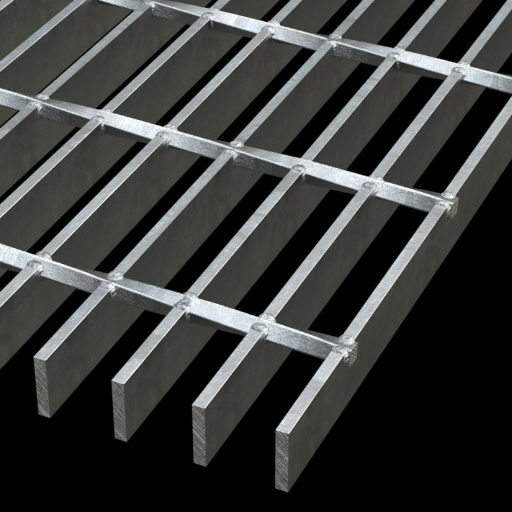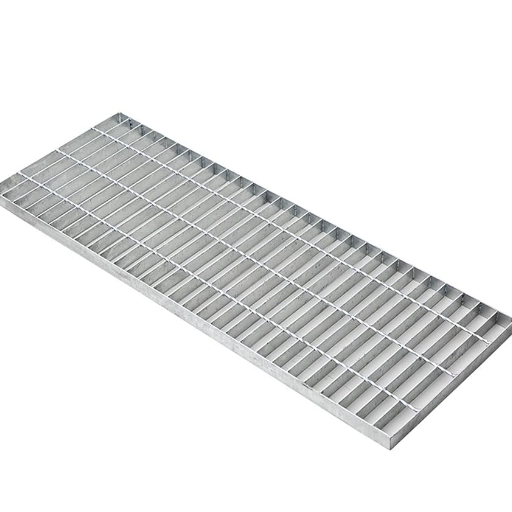The construction industry is undergoing a significant transformation, particularly in the areas of flooring and walkways. One of the most important shifts is the transition from traditional flooring materials to innovative steel grating solutions. As builders and contractors face the challenges of durability, safety, and cost-efficiency, steel grating emerges as a modern alternative that fulfills these demands. In this article, we delve into the first-hand experiences and insights that have led competent builders to move away from conventional materials, emphasizing the advantages that steel grating presents. Click here to read more
Steel grating is not just a trend; it is revolutionizing how builders approach projects relating to load-bearing surfaces, drainage solutions, and safety applications. Beyond simple aesthetics, the use of steel grating offers enhanced performance features, robust design options, and improved longevity, making it indispensable in various construction settings, from industrial platforms to commercial spaces. By understanding the multifaceted benefits of steel grating, builders can make informed decisions that align with modern construction demands.
This comprehensive guide aims to explore the numerous advantages, types, and applications of steel grating, shedding light on why so many in the construction industry are opting for this progressive solution. Join us as we unravel the versatility of steel grating, its practical applications, and how it is setting a new standard in the building materials realm.
Advantages of Steel Grating Over Traditional Flooring Materials

Steel Grating
Durability and Longevity
One of the primary reasons builders are gravitating towards steel grating is its exceptional durability. Unlike traditional materials such as wood or concrete, steel grating is engineered to withstand harsh environmental conditions, heavy loads, and significant wear and tear. This longevity not only reduces replacement costs but also minimizes long-term maintenance—allowing builders to allocate resources elsewhere.
Safety Features and Design Flexibility
Safety is paramount in construction, and steel grating excels in providing anti-slip surfaces and enhanced drainage capabilities. Modern steel grating systems can be customized with various coatings or surface treatments to meet safety regulations and increase friction, reducing the likelihood of slips and falls. Additionally, the lightweight yet strong design allows for various shapes and sizes, catering to diverse architectural requirements.
Cost-Effectiveness and Return on Investment
Smart builders are always on the lookout for materials that promise a strong return on investment. Steel grating, while sometimes perceived as costly upfront, often proves to be more economical over its lifespan due to its durability, low maintenance needs, and potential for energy savings through better drainage. Therefore, investing in steel grating not only enhances a project’s value but also contributes positively to a builder’s bottom line.
Types of Steel Grating: Custom Solutions for Every Project
Bar Grating: Versatile and Robust
Bar grating is the most common type of steel grating found in both industrial and commercial settings. It consists of parallel bars welded together, forming a grid that can support loads while allowing for easy drainage and airflow. Available in various sizes and spacing options, bar grating can be adapted to meet specific project demands.
Expanded Metal Grating: Lightweight and Non-Slip
For applications requiring lightweight materials, expanded metal grating is an excellent choice. It is made by slitting and stretching metal sheets, creating a pattern that is both functional and aesthetically pleasing. This type of grating offers strength and is commonly used in platforms, walkways, and decorative elements in modern architecture, providing a blend of style and safety.
Composite Grating: The Best of Both Worlds
Composite grating combines materials like fiberglass with steel, offering unique benefits such as resistance to corrosion and chemical exposure. Builders increasingly opt for composite grating in environments prone to moisture or harsh chemicals, ensuring longevity and lower maintenance without sacrificing strength.
Applications of Steel Grating in Modern Construction Projects
Industrial and Commercial Use Cases
The application of steel grating extends far beyond standard flooring solutions. Industries ranging from manufacturing to oil and gas rely on steel grating for its strength and safety features. In factories, for example, steel grating can be used for walkways, platforms, and drainage systems, ensuring both functional utility and compliance with industrial safety standards.
Architectural Applications: Beyond Functionality
In architectural settings, steel grating is often employed in creative designs that enhance aesthetic appeal. From modern rooftop terraces to artistic installations, builders utilize steel grating not only for its practicality but also for its ability to offer unique visual elements that align with contemporary design trends.
Environmental Benefits of Steel Grating
In an era where eco-friendliness is critical, steel grating stands out due to its recyclability and minimal environmental impact during production. Using steel grating contributes to sustainability goals, as it can often be reprocessed or repurposed at the end of its life cycle, considerably reducing landfill waste compared to traditional materials.
Making the Transition: Why Smart Builders are Adopting Steel Grating

Steel Grating
Overcoming Traditional Mindsets in Construction
Despite the clear benefits of steel grating, some builders face hurdles when shifting from traditional materials. A reluctance to adopt new technologies can stem from skepticism about performance or a lack of familiarity. However, with advancements in manufacturing technologies and material science, today’s steel grating offers unmatched reliability that smart builders cannot ignore.
Case Studies: Success Stories from the Field
Numerous case studies highlight successful transitions from traditional flooring options to steel grating. Whether in urban development projects that require robust materials to withstand high foot traffic or in outdoor public spaces that prioritize safety and drainage, these success stories demonstrate the versatility and practicality of steel grating in real-world applications.
Getting Started with Steel Grating: An Actionable Guide
For builders interested in transitioning to steel grating, selecting the appropriate style and application is essential. Engaging with suppliers who specialize in steel grating can provide insights into material specifications and customization options. Also, understanding local construction codes and regulations regarding steel grating installations is crucial for ensuring compliance and maximizing performance.
Summary and FAQs: Steel Grating Essentials for Builders
Steel grating represents a revolutionary shift in the construction industry, catering to the needs of smart builders looking for durability, safety, and cost-effectiveness. Its numerous advantages over traditional materials make it a top choice for a variety of projects. Here, we summarize key insights and address common questions builders may have about this innovative material.
What are the main advantages of using steel grating?
Steel grating offers excellent durability, safety features, design flexibility, and long-term cost savings. It withstands heavy loads, provides anti-slip surfaces, and reduces maintenance costs due to its longevity and resistance to environmental wear.
How does steel grating compare to traditional materials?
Compared to wood and concrete, steel grating is lighter, stronger, and more resistant to corrosion and chemicals. It also allows for better load distribution, drainage, and airflow, making it a superior choice for many applications.
Where can steel grating be used in construction?
Steel grating is utilized in a variety of settings, including industrial platforms, commercial walkways, architectural designs, and environmental applications. Its versatility allows it to serve as both a functional and aesthetic component in modern construction projects.
Is steel grating eco-friendly?
Yes, steel grating is an eco-friendly option. It is fully recyclable and contributes to sustainability initiatives by reducing material waste and minimizing environmental impact during production and disposal.
What should builders consider when choosing steel grating?
Builders should consider the specific project requirements, such as load capacity, design flexibility, safety features, and environmental conditions. Engaging with experienced suppliers can also provide insights into the best types of steel grating for each situation.
In conclusion, the advantages of steel grating create a compelling case for its adoption in modern construction. As builders continue to seek innovative materials that deliver on performance and safety, the steel grating revolution is well underway.

